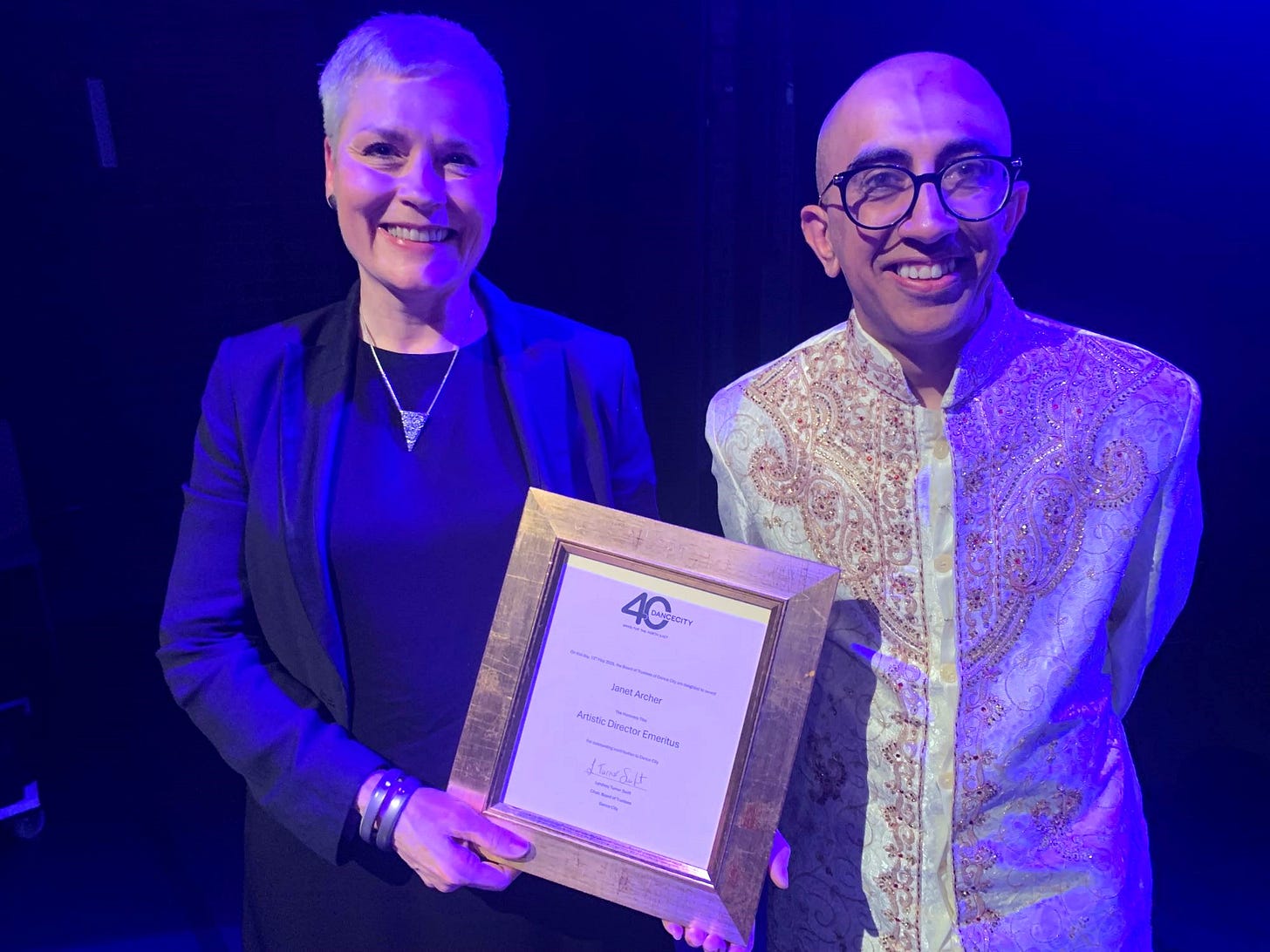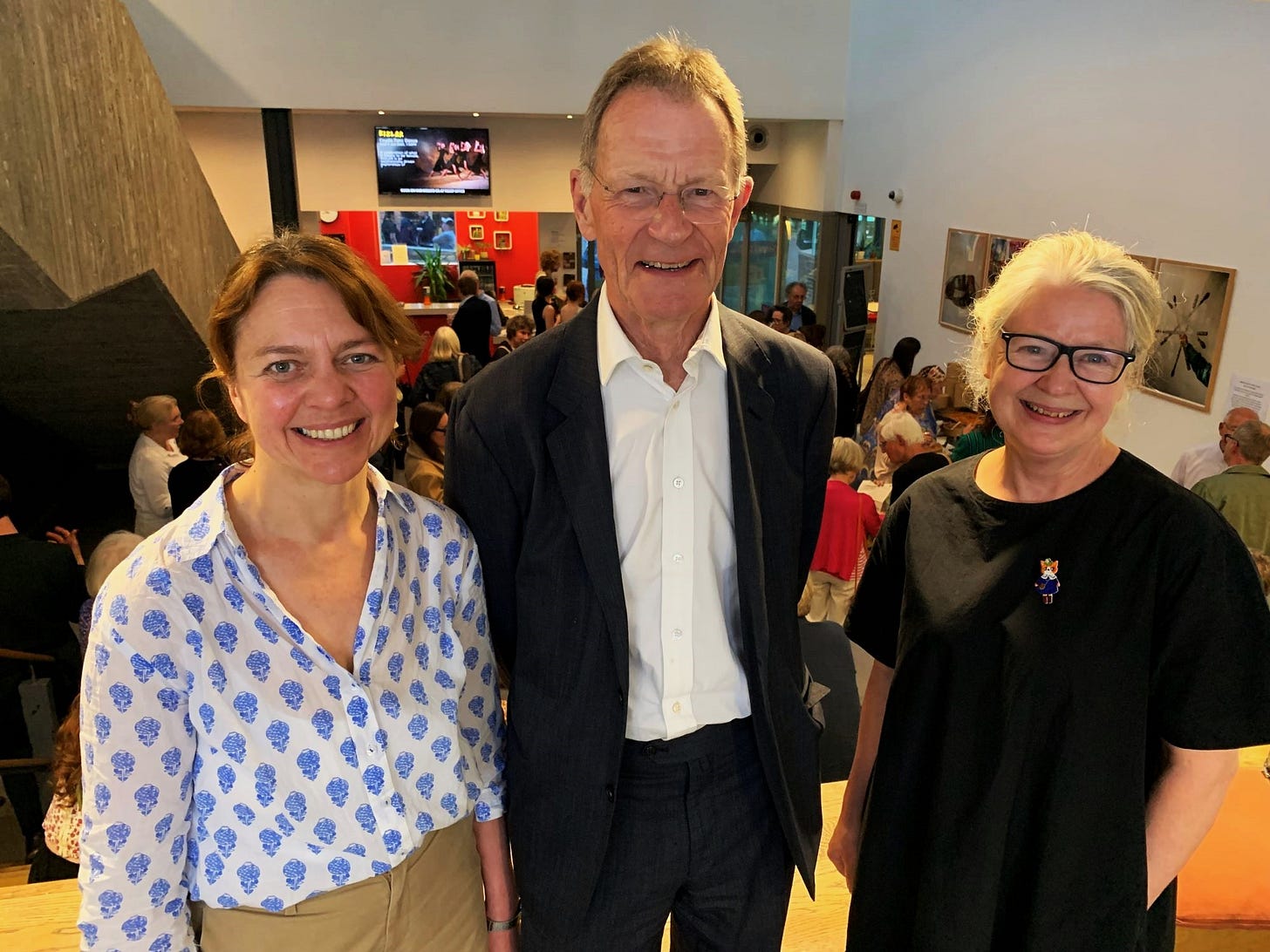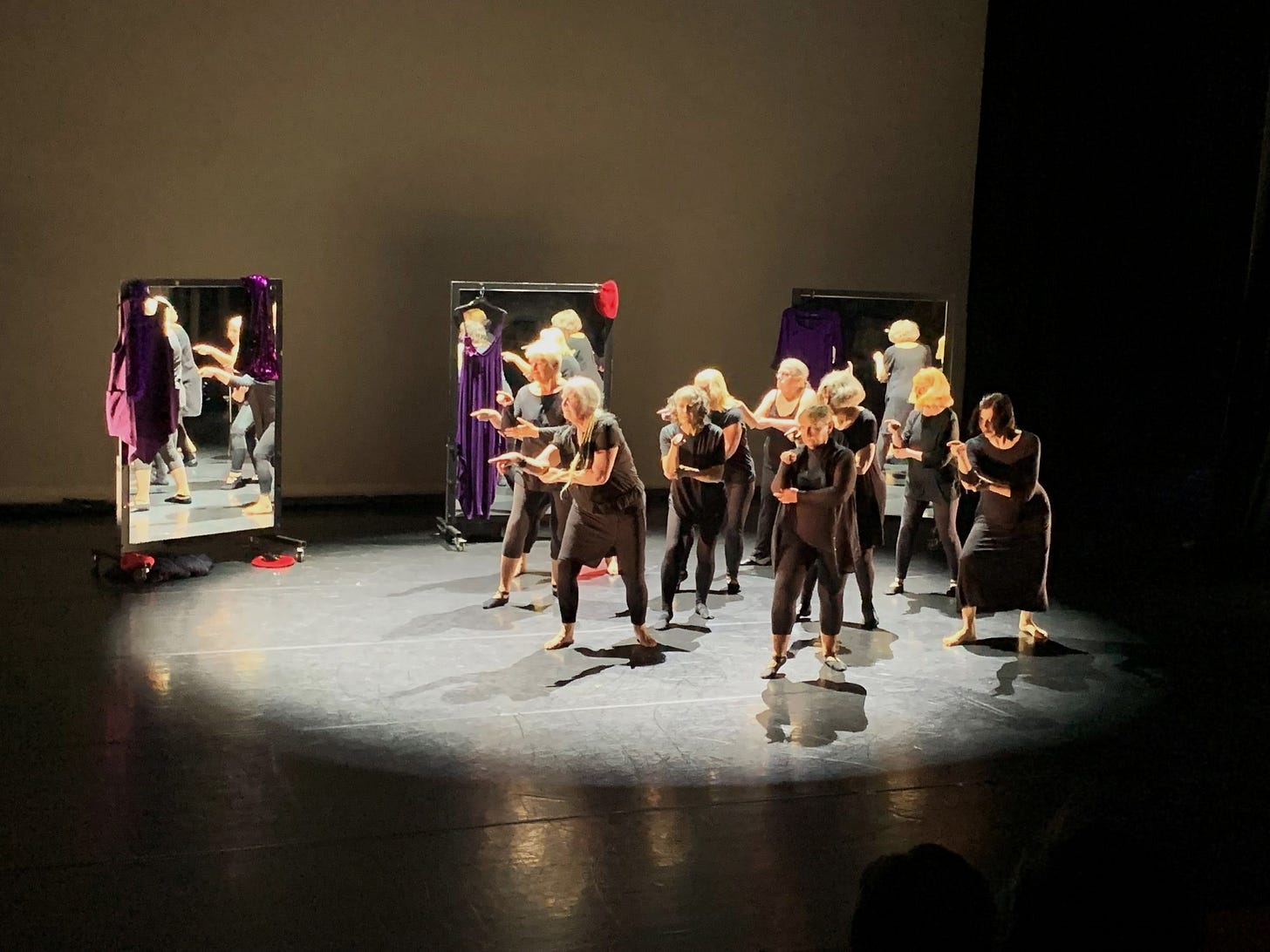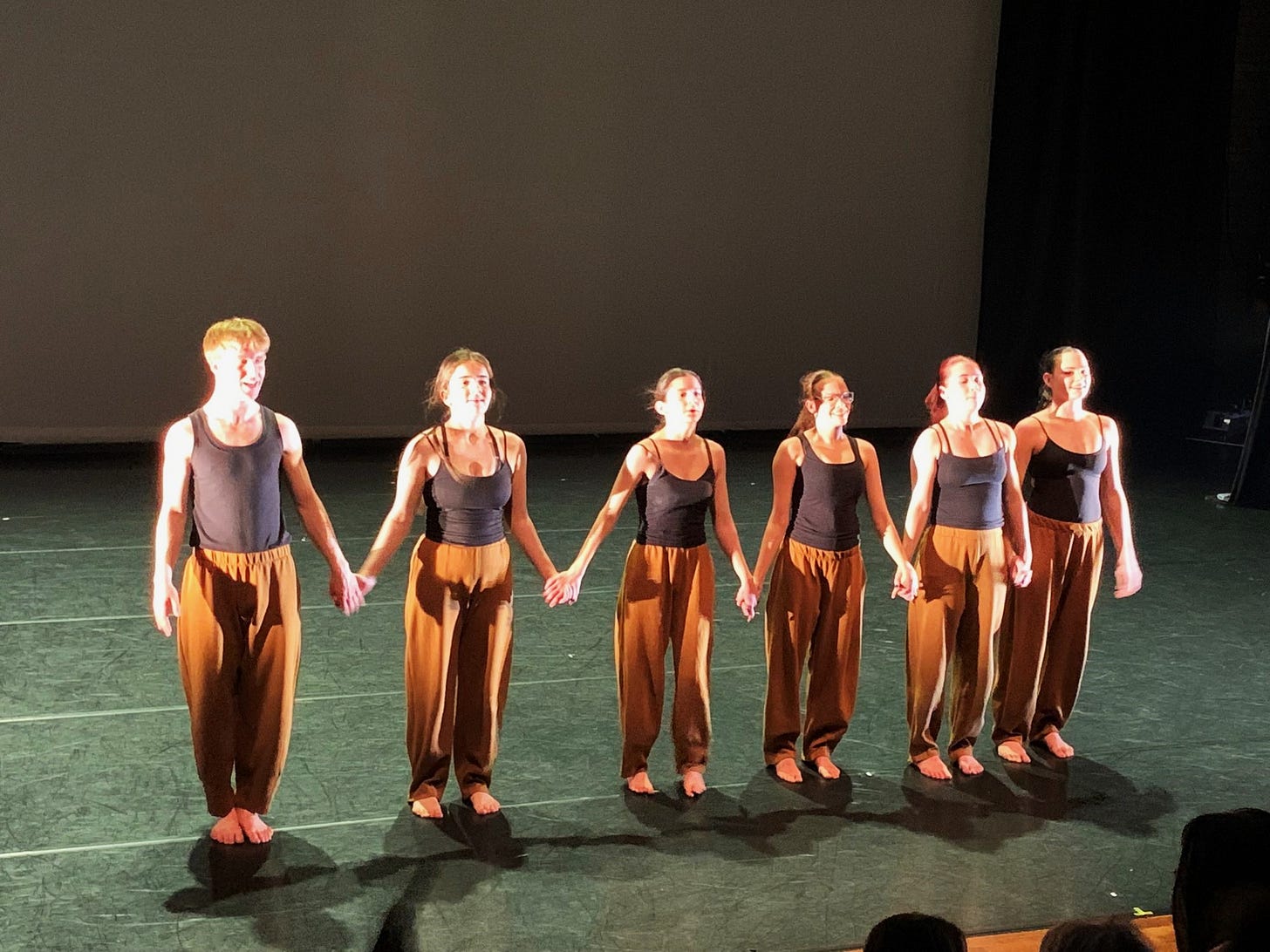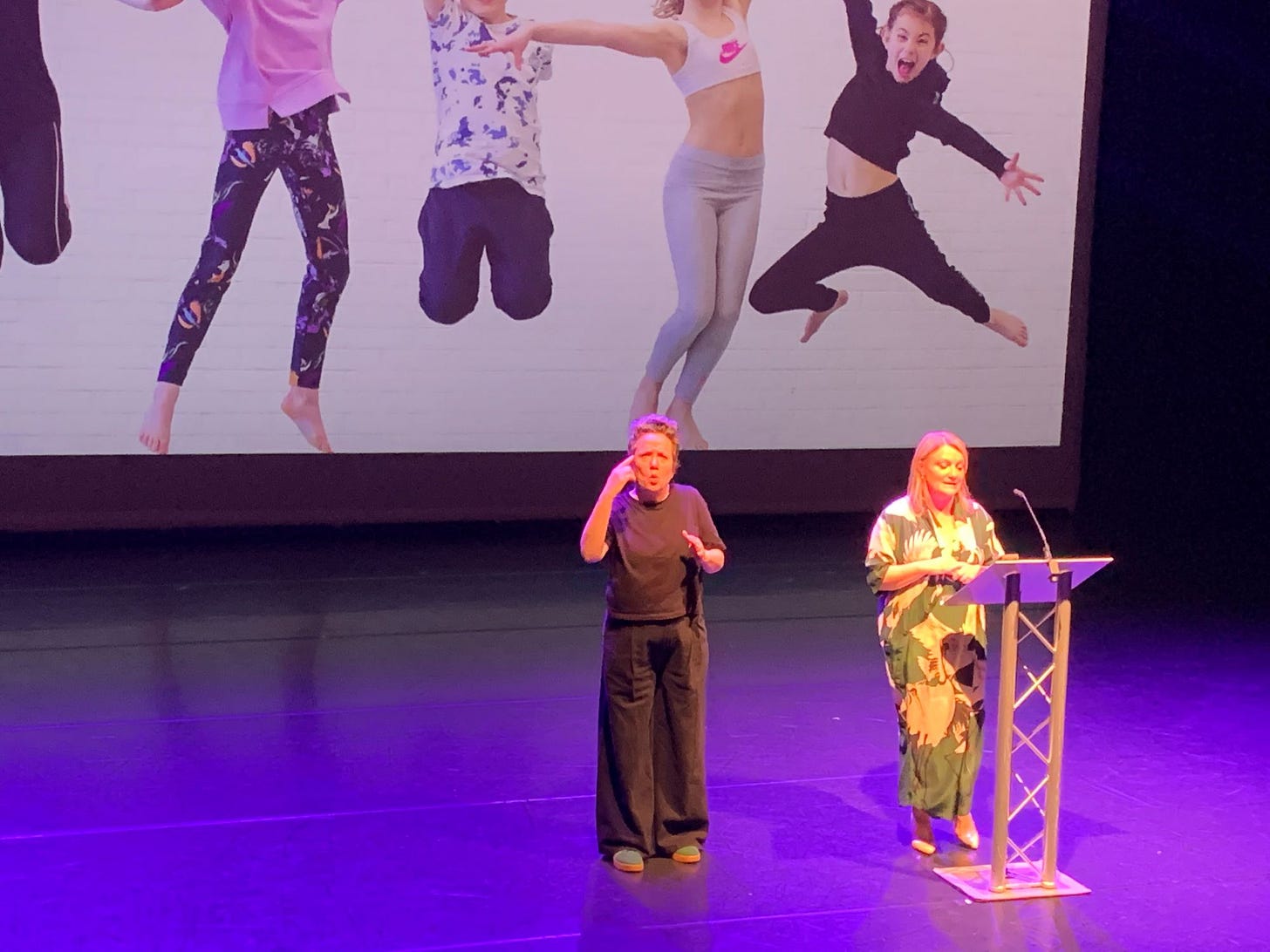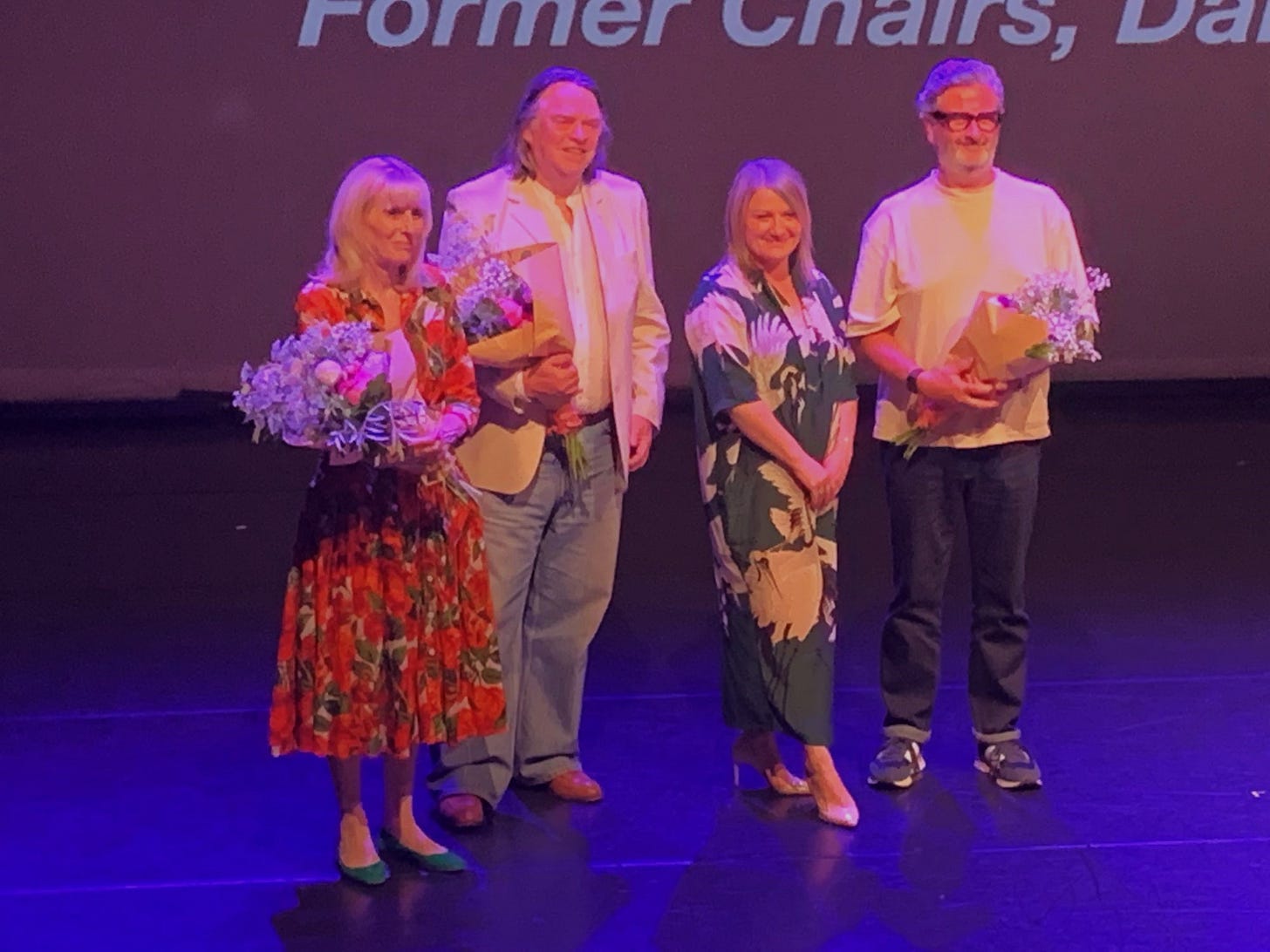Dance City makes case that life begins at 40
Special night shows how far North East dance has come
Powerful speeches and performances were forthcoming as the 40th anniversary of Dance City was celebrated at its home on Newcastle’s Peel Lane, alongside St James’ Boulevard.
Much energy has been expended within the walls of this purpose-built dance centre since it opened to the public in January 2006, replacing the nearby converted warehouse where it all began in 1985.
But the point was made that Dance City is much more than bricks and mortar (plus a considerable expanse of glass).
Over four decades its influence has been felt region-wide, so that now contemporary dance, far from being a rare beast, is part of the North East’s cultural ecology, with classes, courses and a growing number of people whose living it provides.
Many acclaimed performances have been created here; and, as Tuesday night’s celebration demonstrated, dance is open to all as a joyous form of recreation and self-expression.
But it began – as noted approvingly by Sir Nicholas Serota, chair of Arts Council England – not with a welcome speech but with dance, namely the hip hop-inspired and award-winning Family Honour, a duet performed by creator Kwame Asafo-Adjei and Princess Van-Der-Larbi.
A man and a woman, first seated across a table but then on their feet and sometimes head to head, engage in a ritualistic joust of crackling tension.
As co-producer (with Sadler’s Wells and Theater Rotterdam), Dance City had a hand in the creation of this unsettling yet compelling piece, first performed here in 2022.
Other less confrontational performances were equally impressive, not least from the young dancers developing their skills under the auspices of Dance City on its CAT (Centre for Advanced Training) scheme or its BA (hons) course in professional dance*.
Many of these brilliantly talented youngsters, you could see, will go on to live their lives through dance and will perhaps stick around to boost what we already have in the North East.
Boundless, Dance City’s excellent company of dancers aged 55 plus, showed us what it can do, excelling in a performance choreographed by Kristin Kelly Abbott and riffing on Jenny Joseph’s famous poem, Warning, which begins: “When I am an old woman I shall wear purple…”
It’s a clarion call to women everywhere who are approaching what has traditionally been referred to as an uncertain age.
But where were all the men of an uncertain age, all those grown-up Billy Elliots, on this Dance City night of celebration? Perhaps they’d had pressing alternative engagements. Or perhaps they don’t exist. Come on lads! Shake a leg.
They should take inspiration from Boundless dancer Joan Watson who reflected on a lifetime in recreational dance, an art form, she said, that had sustained her through her career in nursing and subsequently through retirement, bereavement (the recent loss of her dear husband) and even a “David Beckham injury”.
Clearly it would take more than a fractured metatarsal or two to stop Joan dancing. Here she was back on stage, light again on her fully recovered toes.
To bookend the evening (if you discount the cutting of a celebration cake), Anthony Lo-Giudice, an influential choreographer in the North East, performed his intimate duet L’uomo with fellow dancer Alex Rowland under the lowest of lights.
But there were, of course, speeches with new Dance City chair Lyndsey Turner-Swift opening proceedings with thanks and a brief flashback to the cultural landscape of 1985.
This was shortly after Yair Vardi had relocated his English Dance Theatre to Newcastle and made known his idea for a centre for dance excellence that would accommodate his company and provide community dance classes.
Vardi would return to his native Israel in 1987 (his company folded two years later) but Newcastle City Council listened and invested £80,000 in converting that warehouse where Dance City was duly born in May 1985, with dancer Lynn Seymour doing the ribbon cutting honours.
A few years later it became one of Arts Council England’s new national dance agencies and in 1991 Janet Archer, one-time Cosmopolitan magazine Young Dancer of the Year and now an ambitious and energetic innovator, was appointed as artistic director.
“I’ve never been somebody who’s frightened of a challenge,” she told me shortly after arriving in a building with well-used dance studios but no matching chairs.
Janet oversaw the conception and delivery of the new Dance City, finally departing in 2007 when the job was done.
Now CEO of Edinburgh Printmakers – and engaged, she revealed, in a new capital project – she was back to reminisce about her early days in Newcastle and the opening of Dance City, and also to receive the new honorary title Artistic Director Emeritus from its current supremo, Arnand Bhatt.
Nobody could argue that wasn’t well-deserved.
Sir Nicholas Serota called Dance City an “exceptional organisation” and expressed “incredible admiration for what Dance City has been and become”.
He alluded to recent debate in the art world about whether the Arts Council should be supporting excellence or access.
“To me,” he said, “that’s a completely false antithesis because they’re not mutually exclusive”.
“The fact is,” he added, “that Dance City embodies excellence and embodies and expresses access”.
He commended the energy of Janet Archer as an exceptional leader but said the organisation couldn’t be in better hands than it was now.
“What you do is so important not just for this city, not just for this region but nationally,” he said, directing his remarks to the current Dance City staff and trustees.
Which was the cue for Anand Bhatt, elegantly attired in accordance with his Indian heritage, to take to the stage and declare that “life begins at 40”.
“Whether you work in dance or just love it, or indeed are curious or new to it, Dance City has an entry point for everybody,” he said, before enlarging movingly on the challenges dance has faced and continues to face.
“Live performance was challenged by the arrival of cinema, then home television, home video, home computers, the internet, mobile phones,” he said.
“Our biggest competitor is not another dance school or another theatre – it is Netflix and mobile games. These competitors offer a dopamine hit and inconsumable amounts of content for pennies a day.
“Throughout, dance and other performing arts have stayed strong. When the pandemic struck, our colleagues got people to their front doors and danced on streets and we moved dance sessions online.
“We as the dance fraternity rise to serve our communities under difficult circumstances.
“I grew up in a time and a place where we didn’t have a Dance City, but for someone like me Dance City could have changed the trajectory of my life.
“Dance City isn’t a building, Dance City has a building. We deliver meaningful programmes to people every day from this purpose built centre and community settings across the North East.”
On offer was something that rivals such as Netflix and games on mobile phones could not match.
“Whilst we embrace digital, virtual and AI opportunities, it is only to serve real life connection… moving in a room together or watching (dance) on a stage with others and being able to talk about what you have experienced thereafter.
“This is what we must protect in a world which is constantly trying to make ‘Instagrammable’ moments. The authentic and visceral memories we create here at Dance City reside deep inside people’s hearts.”
That much was clear from all the performers on the night and the dance movers and shakers, including Martin Wilson of Durham-based TIN Arts and Rachel Birch of Moving Arts Management, who contributed to a panel discussion, and to past Dance City chairs Sharon Paterson, Jeff Dean and David Haley.
The threats to live dance – and indeed to the arts in general – are many and potent (*for one thing, that dance degree course, run with the University of Sunderland, is closing for reasons that should sound an alarm).
But what was clear from Tuesday night is that dance in the North East has many friends, having established itself as a valuable facet of life in the region, and they will dedicate all their energy to defending it – and will do so, no doubt, with exemplary elegance and poise.
Finally, as Lyndsey Turner-Swift pointed out, the 40th anniversary celebrations will continue all year – so best keep an eye on the Dance City website for future attractions and developments.



